
Did you know that over 92% of search queries are long-tail keywords? Imagine a waterfall flowing with hidden opportunities, providing an endless stream of high-converting traffic. That’s exactly what you’ve been missing out on by not utilizing long-tail keywords effectively in your content! In today’s post, we will reveal the secret of unlocking the immense potential of these overlooked gems and transforming your website into a traffic magnet. So, sit back and prepare to be blown away as we step into the fascinating world of long-tail keywords and teach you how to wield this powerful weapon in the battle for SERP domination.
To use long-tail keywords effectively in content, start by researching and identifying specific keyword phrases that are relevant to your target audience. Then, incorporate those phrases naturally into your content, ensuring it is well-written and engaging for readers. By optimizing your content with the right long-tail keywords, you can improve relevance for search engines and attract more qualified traffic to your website over time. To maximize the benefits of using long-tail keywords in your content, ensure that each piece of content focuses on a specific topic or theme and incorporates multiple related long-tail terms throughout the copy. This approach can help demonstrate comprehensive expertise on a given subject area while also improving the chances of ranking for highly-specific queries.
Understanding Long-tail Keywords
If you’re new to the SEO game, it can be challenging to understand exactly what long-tail keywords are, let alone how to use them effectively in your content. In short, long-tail keywords are more detailed and focused keyword phrases that people use when they are trying to find something specific on search engines like Google. While short-tail keywords can be competitive and general, long-tail keywords are specific and often contain several words strung together.
For example, a short-tail keyword might be “SEO,” which is incredibly generic and broad. In contrast, a long-tail keyword might be “how to improve SEO for small businesses”. This phrase is much longer than the previous one but also provides more context with regards to intent.
Using long-tail keywords presents several benefits when it comes to creating engaging content. First of all, these types of phrases tend to be less competitive than shorter terms since there’s less competition for longer, highly-specific keywords. Additionally, this specificity leads to better conversion rates since people searching for long-tail phrases generally have clearer intentions behind their searches.
However, some people might argue that using long-tail keywords limits website traffic since these phrases don’t see as many searches as shorter ones. While this may be true in some cases, the specificity of these phrases often results in higher-quality traffic to your site.
Think of it this way: would you rather have 100 irrelevant clicks or 10 clicks from people genuinely interested in your products or services? The latter might result in fewer numbers overall but better quality traffic that’s more likely to convert into sales or subscribers.
Ultimately, understanding long-tail keywords is the first step toward creating better-optimized content that speaks directly to your target audience. Once you know what they are, it’s time to start brainstorming and finding phrases that work for your site.
Long-tail keywords are specific and detailed keyword phrases that people use when trying to find something on search engines. These phrases are less competitive, leading to better conversion rates and higher-quality website traffic. While they may not see as many searches as shorter terms, the specificity of long-tail keywords often leads to more relevant clicks and better overall results. Understanding long-tail keywords is key to creating optimized content that speaks directly to your target audience.
Identifying These Phrases
The process of identifying long-tail keywords is essential to incorporate them into your content effectively. It starts with understanding your target audience and what they’re searching for when looking for your products or services.
One way to identify potential long-tail keyword phrases is by conducting keyword research with tools like On-Page.ai. These tools allow you to see what people search for the most in your niche and provide insights into the competition level for each phrase.
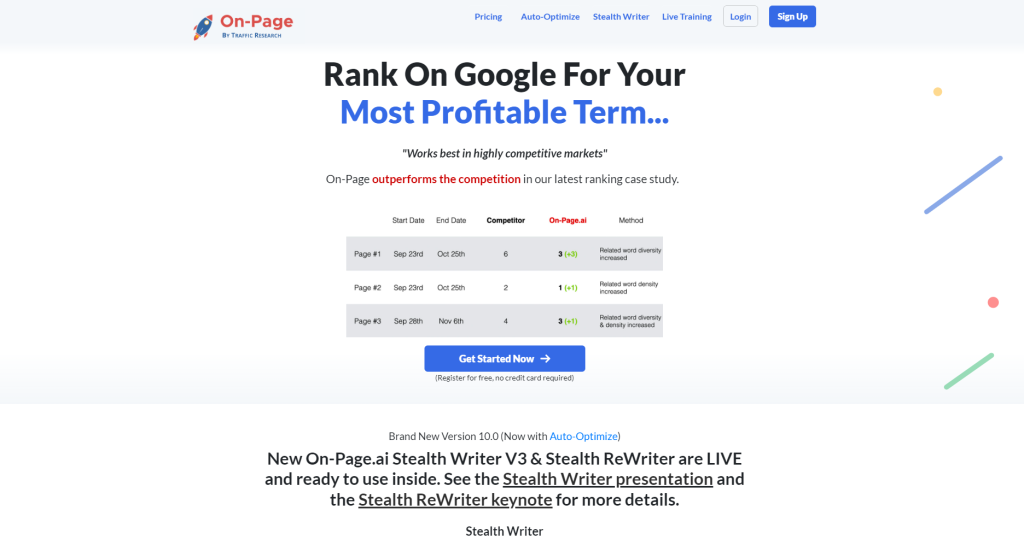
Another method is to create customer personas based on demographic information and search history data. You can then analyze these profiles to determine the most popular queries and incorporate those phrases into your content marketing strategy proactively.
However, some people might argue that this approach can be too narrow-minded since not everyone fits into strict customer persona categories. While this may be true, generalizing your audience makes it easier to craft compelling content quickly.
Think of it this way: If you create content strictly tailored to one specific customer persona, you may still attract interest from others outside of that profile. However, if you don’t have any target audience in mind, it’s much harder to tailor content effectively, leading to a lack of engagement across the board.
By keeping a particular target audience in mind when identifying long-tail keywords, you’ll be able to create more focused content that resonates specifically with potential customers interested in what you have to offer. This specificity will lead to increased engagement and better rankings overall.
- Studies have shown that long-tail keywords account for 70% of all search queries, indicating their significance in driving organic traffic.
- Research conducted by Ahrefs revealed that pages ranking for a single long-tail keyword usually rank for hundreds of other related long-tail keywords, demonstrating the collective impact they have on a website’s SEO strategy.
- According to HubSpot, content optimized with long-tail keywords tends to have a higher conversion rate, with businesses experiencing better conversion rates than those focusing solely on short-tail keywords.
Incorporating Long-tail Keywords in Content

Long-tail keywords are an essential component of any successful SEO strategy. They capture the essence of what your target audience is searching for, and they increase the visibility of your website by tapping into highly targeted niches. In this section, we’ll explore how to incorporate long-tail keywords into your content effectively.
For example, let’s say you’re creating content about organic dog food. Instead of focusing solely on the keyword “dog food,” you might expand your research to include phrases like “best organic dog food brands” or “healthy dog food for sensitive stomachs.” These longer phrases provide a more specific context for your content, making it easier for search engines to categorize and rank your pages.
Once you’ve identified relevant long-tail keywords that align with your content strategy, how can you use them effectively in your copy?
One key principle is to avoid overusing your target phrases. While it may be tempting to cram as many long-tail keywords as possible into each page, such a tactic would only lead to spammy content that will turn off both readers and search engines alike. Instead, aim to mention each phrase naturally within a piece of content – once or twice per article at most.
Let’s continue with our example of organic dog food. You might write an article titled “5 Best Organic Dog Food Brands for Sensitive Stomachs”. Throughout your article, you could mention variations on “organic,” “dog food,” and “sensitive stomachs” in a natural way that flows with the tone of the article.
Some website owners assume that using exact-match long-tail keywords alone can boost their rankings instantly. However, such strategies result in poor-quality content that ultimately provides little value to readers. The takeaway here? Rather than stuffing your content with keywords, focus on creating well-written, informative pieces that resonate with your audience.
Let’s continue exploring ways to enhance copy using relevant long-tail terms.
Enhancing Copy with Relevant Terms
While incorporating long-tail keywords can be a useful strategy, it is also essential to enhance your copy by incorporating relevant terms beyond just keywords. By doing so, you can create content that resonates with your reader’s intent and thus possesses more value.
One way to achieve this goal is to conduct audience research carefully. For example, analyze user search behaviors to reveal common expressions and phrases that people use when trying to find information about a particular topic. Once you understand these phrases, incorporate them into your copy in a natural way that will appeal directly to your intended audience.
Going back to our organic dog food example, let us say you identified “natural,” “grain-free,” and “hypoallergenic” as some commonly searched phrases in tandem with long-tail keywords. Thus when writing an article on the Best Organic Dog Foods for Sensitive Stomachs, you may consider mentioning these key contextual phrases in addition to using long-tail words which will make your content far more valuable and informative than other similar pieces online.
Just as chefs blend spices to create savory dishes that are pleasing to the palate, webmasters must sprinkle contextually relevant phrases throughout content copies. By doing so, they craft experiences that are memorable—ones that induce engagement from visitors and establish trust between them and website owners. Moreover, adding such related terms throughout the copy improves readability while simultaneously enhancing the concept of centered context around a topic or subject matter.
Lastly, there’s no perfect formula for incorporating long-tail keywords and contextually relevant phrase searches into content copies; however, focusing too much on one while completely omitting the other will be detrimental to your strategy. Ensure that blending both context and keywords comes naturally and aligns with user intent to make informative content.
Boosting Visibility and SEO

Long-tail keywords lead to more comprehensive content, provide additional context for Google, and help inform the depth of your copy. While individually low-volume long-tail keywords may not drive much traffic, collectively they can make a significant difference in your SEO strategy. Long-tail keywords tend to be more specific with higher buyer intent, indicating better chances of conversion. Relevance and specificity are key factors that help improve rankings when targeting long-tail keywords.
One way to boost visibility is by optimizing your headlines with keyword-rich phrases that front-load relevant keywords. This will enhance user experience and increase website traffic. For instance, as an SEO tool provider, writing a post about “SEO” might not be as effective as “Unlocking the Power of Long-Tail Keywords: How to Use Them Effectively in Content,” highlighting the target audience’s interest.
Long-tail keywords help you tailor content and marketing strategies based on the audience’s search behavior and preferences. By modifying popular articles to include long-tail keywords that didn’t quite fit into the original content, website owners can optimize their content for better search rankings.
For instance, an e-commerce website specializing in online fashion sales could create a cluster of long-tail keyword articles such as “Top 10 Winter Outfits for Women,” “How to Accessorize a Casual Outfit,” and “Best Shoes for Summer Weddings.”
According to a study conducted by Ahrefs, the majority of web pages ranking on page one of Google have their target keyword or an exact match appearing in their H1 tag, meta description, title tag, image alt tags, and at least once in their main body content.
However, it’s important to note that focusing only on keyword stuffing at the expense of quality and relevance can end up harming your site’s rankings. Google’s algorithm is constantly evolving, and it’s increasingly focusing on user experience and relevance.
Therefore, when targeting long-tail keywords, focus on creating quality content that adds value to your audience while also being relevant. A targeted search strategy will help you leverage these keywords to successfully rank and drive traffic to your website.
Crafting a Targeted Search Strategy

One way to craft a targeted search strategy is by developing topic clusters. Topic clusters are groups of related keywords organized into a hierarchy of blog posts, content clusters, and categories. By creating a comprehensive network of content around a specific topic or theme, you amplify your website’s topical authority and boost your right to rank.
Start by identifying broad topics around which you would like to create content and then break them down into smaller subtopics. Use keyword research tools such as Google Adwords Keyword Planner, Keywords Everywhere, or On-Page.ai to determine the long-tail phrases people use when searching for information related to your topics.
Once you have a list of potential long-tail keyword phrases, create high-quality content such as blog posts, whitepapers, e-books, infographics, videos, or podcasts that focus on those specific phrases. The goal is to provide detailed answers to questions that people might be asking related to your topic.
For example, let’s say you run an online catering business. You could start by creating broad topics like “event planning” or “party supply rental.” Then choose subtopics like “catering for weddings,” “catering for corporate events,” and “catering for birthday parties,” among others. Using keyword research tools, identify long-tail keyword phrases such as “wedding catering ideas” or “corporate event menu planning”. Create high-quality content around these phrases and optimize it for SEO purposes.
According to HubSpot, websites that create topic clusters generate more organic traffic than those that don’t. These websites are better equipped to provide the kind of comprehensive information users are looking for and can easily rank higher in search engine results pages.
Think of each topic cluster as a library, with each book representing a piece of content centered around a specific long-tail keyword phrase. The more books you have in your library on a particular topic, the more expert you become in that field, and the higher the chances of ranking higher in search engines.
Evaluating Long-tail Keyword Impact

Once you have incorporated long-tail keywords into your content, it’s time to measure their impact. Evaluating the effectiveness of these terms is critical in determining whether or not they are achieving the desired results. In this section, we’ll explore how to assess the impact of long-tail keywords on your SEO strategy and website traffic.
One way to evaluate long-tail keyword impact is through website analytics tools such as Google Analytics. By analyzing website traffic from organic search results, you can determine which specific long-tail keywords are delivering the most engagement and conversions. This information can help refine your content creation and marketing strategies, allowing you to focus on the most effective tactics for driving traffic and increasing conversions.
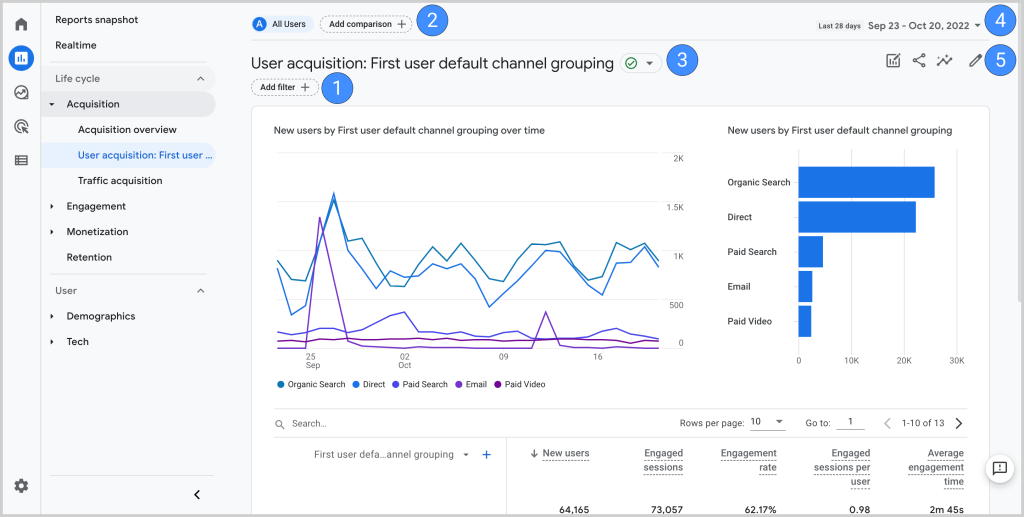
Another method is to track changes in search engine rankings over time. As you continue to optimize your content with targeted long-tail keywords, monitor how your pages move up or down in the search engine rankings for those terms. This data can provide insight into the effectiveness of your optimization efforts and help identify areas where further improvements may be needed.
It’s important to note that evaluating long-tail keyword impact can be challenging due to the nature of these terms. Since they are highly specific and often low-volume, their impact may not always be immediately apparent. Additionally, factors beyond just keyword usage may influence rankings, such as backlinks and site authority. However, by focusing on tracking engagement and ranking changes over time, you can gain valuable insights into the impact of long-tail keywords on your overall SEO strategy.
Evaluating long-tail keyword impact is like measuring the success of a targeted marketing campaign. By analyzing metrics such as click-through rates, conversion rates, and engagement data, you can determine whether or not your campaign is resonating with your target audience. Similarly, by tracking search engine rankings and website traffic data, you can determine whether your long-tail keyword strategy is effectively reaching your target audience and driving engagement and conversions.
Ultimately, the success of your long-tail keyword strategy will depend on a variety of factors, including the relevance and specificity of the terms, the competitiveness of your market, and the quality of your content. By continually analyzing data and making adjustments as needed, you can ensure that you are leveraging these powerful phrases to their fullest potential.
To effectively evaluate the impact of long-tail keywords on your SEO strategy, it’s crucial to have access to powerful analytics tools that provide detailed insights into website traffic, search ranking data, and engagement metrics. On-Page.ai offers a comprehensive suite of AI-powered SEO optimization tools designed to help you unlock the power of long-tail keywords and achieve better visibility and rankings in highly competitive markets. Whether you are looking to optimize existing content or create new pages from scratch, On-Page.ai has the features you need to succeed.
Frequently Asked Questions
What exactly are long-tail keywords and how do they differ from regular keywords?
Long-tail keywords are specific, three-to-four-word phrases that are used to target a narrow and highly-targeted audience. They differ from regular keywords in that they are more specific and have a lower search volume.
Regular keywords tend to be broad and general, which makes them highly competitive. According to Ahrefs, only 0.16% of all Google searches have a search volume of over 50,000 per month. This means that trying to rank for popular keywords is incredibly tough.
On the other hand, long-tail keywords account for 70% of all web searches. They bring in a smaller amount of traffic individually, but when combined, their traffic can surpass the most competitive keywords.
Long-tail keywords are also less expensive than regular ones when it comes to pay-per-click advertising campaigns. Their specificity means that they are targeted towards a particular audience who may be seeking exactly what you offer. As such, they attract buyers rather than just browsers on your website.
In conclusion, long-tail keywords allow you to target specific niches and demographics rather than try to compete with giants for generic keywords. Getting ranked in the top positions for these long-tail phrases leads to higher conversion rates and better ROI (return on investment).
Do different writing styles or formats (blog posts versus product descriptions) require different approaches to using long-tail keywords?
Yes, different writing styles or formats do require different approaches to using long-tail keywords. The primary reason for this is that each type of content serves a different purpose and targets a distinct audience.
For example, product descriptions are usually shorter and more concise, whereas blog posts tend to be longer and more detailed. Consequently, product descriptions will require the use of fewer long-tail keywords that have a direct relation to the product’s features and benefits. In contrast, blog posts can explore various topics related to a product or service, which may necessitate the use of multiple long-tail keywords.
Another factor that affects the use of long-tail keywords in different writing styles is the level of competition for those specific keywords. Highly competitive industries will require more strategic keyword placement and usage than niche markets with lower competition.
Furthermore, incorporating long-tail keywords into different content formats requires an understanding of search engine algorithms and user intent. For instance, Google’s algorithm now places greater emphasis on user experience, meaning that keyword stuffing and over-optimization can negatively impact a website’s ranking. As such, choosing relevant long-tail keywords that align with users’ queries is critical in increasing website traffic.
In conclusion, it is necessary to evaluate the purpose and audience of different writing styles before determining the optimal approach to using long-tail keywords. Moreover, proper research on industry-specific competition trends and insight into search engine algorithms can further enhance keyword usage efficiency.
Are there any specific tools or techniques that can help identify effective long-tail keywords?
Absolutely! In fact, there are several tools and techniques that can help you identify effective long-tail keywords for your content. Here are a few:
- Google Keyword Planner: This is one of the most popular keyword research tools available online. It allows you to enter a list of seed keywords and provides suggestions for related long-tail keywords along with their search volume, competition, and estimated cost-per-click (CPC).
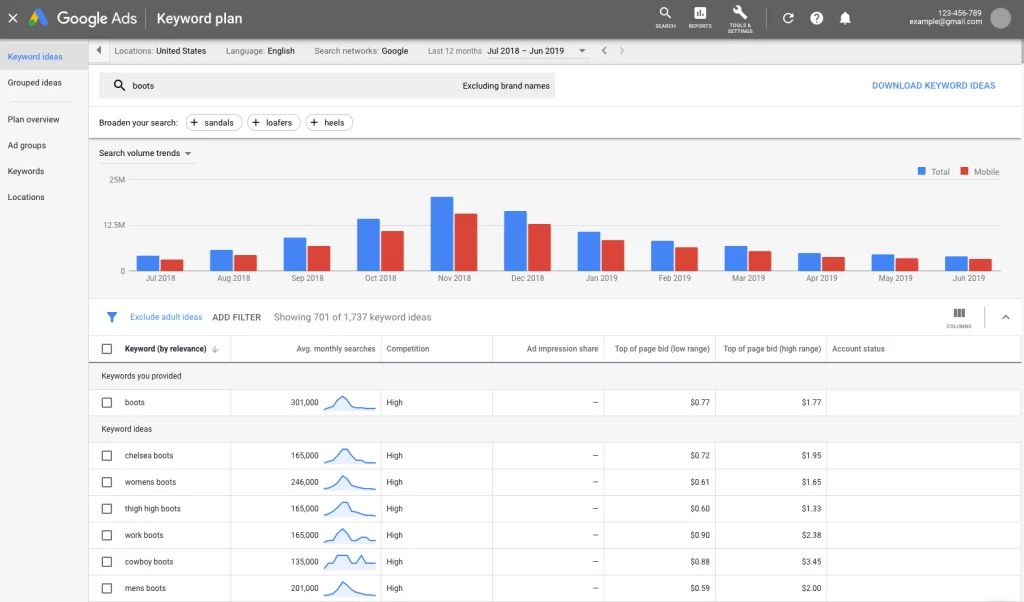
- Ahrefs Keyword Explorer: This is another powerful keyword research tool that allows you to discover new and relevant long-tail keywords based on your seed keyword. It provides in-depth data on keyword difficulty, search volume, click-through rate (CTR), and more.
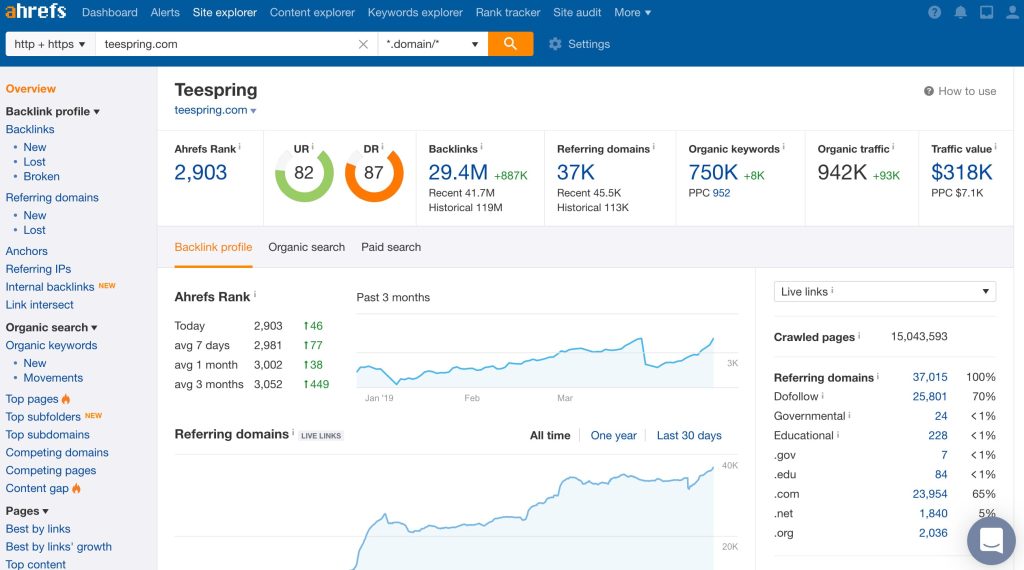
- Semrush: With over 20 billion searchable keywords, Semrush is one of the largest databases of long-tail keywords available online. It provides extensive data on keyword trends, competition level, search volumes, CPCs, and more.
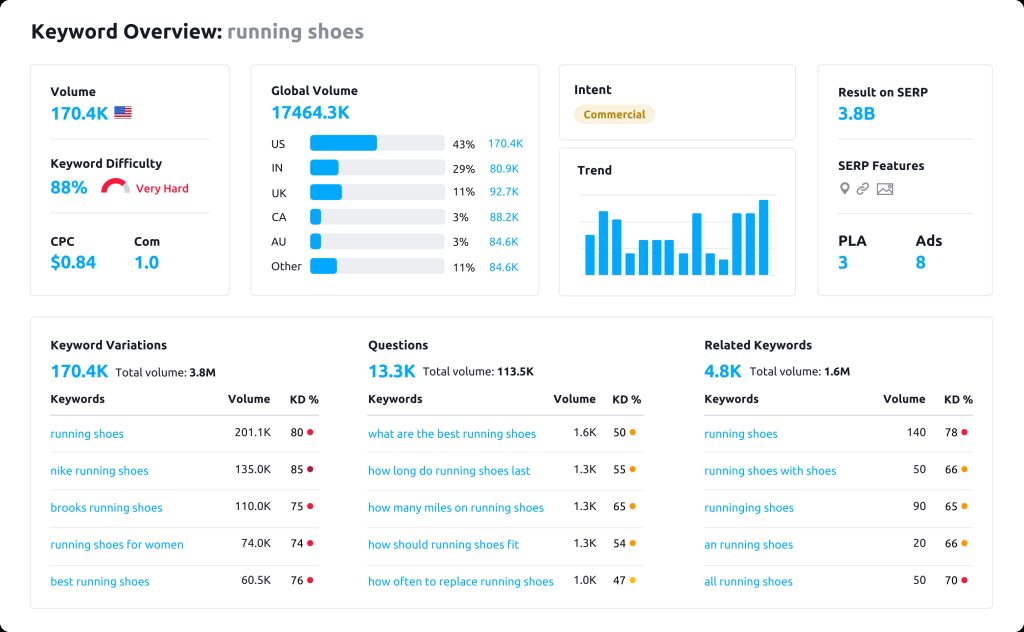
- Google Suggest: This technique involves typing in a seed keyword into the Google search box and observing the suggested searches that come up in real time. This process can help identify potential long-tail keywords that people are actually searching for.

When it comes to identifying effective long-tail keywords, utilizing these tools and techniques can make all the difference by providing you with accurate and data-driven insights to inform your content strategy.
How does using long-tail keywords improve search engine optimization (SEO)?
Using long-tail keywords is a powerful strategy for improving SEO as it helps to target specific queries that are less competitive and have higher conversion rates. Long-tail keywords are longer phrases that are more specific and detailed, which means that they provide more context for search engines to understand exactly what the user is looking for.
Firstly, long-tail keywords account for a significant proportion of all online searches. This means that optimizing your content to include these types of key phrases can help you tap into a large and profitable market segment.
Secondly, using long-tail keywords can help you rank higher in search results pages as they are less competitive compared to generic keywords. For instance, if you were trying to rank for a generic term like “marketing strategies,” it would be challenging as competition from global brands and agencies is high. However, when you use specific long-tail keywords like “social media marketing strategies for small businesses,” your content will have a higher chance of ranking because you’re targeting a more niche audience.
Additionally, long-tail keywords have been shown to improve website engagement metrics such as bounce rates and time spent on the page. Since users find more relevant information related to their queries, they tend to stay longer on your website, potentially leading to more social shares, backlinks, and even sales.
In conclusion, using long-tail keywords is an effective SEO strategy as it helps target highly-specific phrases with low competition that lead to conversions at higher rates than broad keywords. With the increasing difficulty of generic keyword rankings in search engine results pages (SERP), adopting this technique ensures that your business stays competitive and establishes its presence on the internet today.
How often should long-tail keywords be used within a piece of content for the most effective results?
There is no magic number when it comes to the frequency of long-tail keywords in content. However, it’s essential to use them strategically and naturally throughout the piece without overstuffing or forcing them into the text.
According to a study conducted by Moz, incorporating one or two long-tail keywords in a blog post can help rank your post higher on Google. Furthermore, Google tends to favor longer content that includes variations of relevant, related keywords.
Therefore, it’s critical to aim for a good mix of long-tail and short keywords. You can incorporate long-tail keywords in your headlines, subheadings, introduction, meta descriptions, image alt tags, and body copy.
Remember that producing high-quality content must always be your priority rather than prioritizing keyword stuffing. The goal of any website content should be to provide value and information to your audience so they keep returning for more informative posts and sharing them with their network.
To sum up, there is no specific formula for using long-tail keywords within a piece of writing effectively. But using them smartly and naturally throughout your content can help with ranking and visibility online, as well as creating valuable content for readers.




